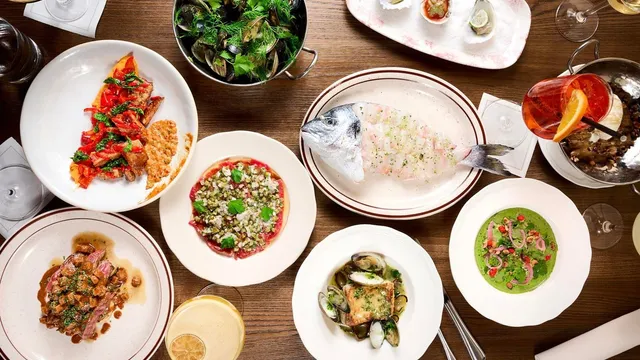
Caché bistro opens in San Francisco's Inner Sunset district
2025-04-27 00:00- Caché Bistro opened on March 8, 2025, in San Francisco's Inner Sunset, founded by Florent Thomas and Chef Simon Mounier.
- The bistro features a menu that merges French cuisine with California ingredients, including innovative dishes inspired by local produce.
- The name 'Caché' reflects the discovery of unexpected culinary delights, creating a unique dining experience for guests.
Express your sentiment!
Insights
In March 2025, Caché Bistro officially opened its doors in San Francisco's Inner Sunset District. The restaurant, founded by Florent Thomas and Chef Simon Mounier, aims to blend French culinary traditions with California's rich natural ingredients. The establishment promises a welcoming atmosphere that feels both new and familiar. Thomas, who has an extensive background in Michelin-starred establishments, has embraced the relaxed California dining culture. Together, they have crafted a menu featuring a modern interpretation of classic dishes, using fresh, local produce that reflects the season’s bounty. Caché Bistro's location was carefully selected for its proximity to Golden Gate Park, offering patrons both a culinary experience tied to the area’s natural beauty and ambiance. The name
Contexts
The intersection of Californian inspiration and French culinary traditions has given rise to a unique trend that encapsulates the vibrant and innovative spirit of California's food scene. This trend not only showcases the rich gastronomic heritage of France but also incorporates fresh, local ingredients and health-conscious philosophies typical to Californian cuisine. As chefs increasingly draw upon regional produce, sustainable practices, and an ethos of simplicity and freshness, a new wave of French-inspired dishes is emerging that appeals to a broad audience. Ingredients like avocados, heirloom tomatoes, and organic greens—hallmarks of California's agriculture—are now making their way into classic French recipes, thereby revitalizing traditional fare and making it more accessible and appealing to modern palates. In the context of fine dining, California-inspired French cuisine is characterized by innovative techniques and presentation styles that reflect the West Coast's emphasis on artistry and aesthetics in food. Chefs are experimenting with sous-vide cooking, fermentation, and other modern culinary methods to elevate traditional French dishes. Additionally, fusion elements integrate various cuisines, offering a cross-continental experience that captivates both seasoned food enthusiasts and casual diners alike. The use of vibrant herbs, citrus flavors, and unexpected texture contrasts further enhances the dining experience, making every dish not just a meal but a compelling story of place and identity. Beyond the plate, the growing focus on sustainability and farm-to-table practices remains a driving force within this trend. Many chefs and restaurateurs are partnering with local farmers and purveyors to source seasonal ingredients that not only support the local economy but also prioritize environmental responsibility. This commitment to sustainability serves six-fold: it enhances flavor quality, reduces carbon footprints, provides transparency in sourcing, and fosters community relationships. As diners become more aware of food origins and ethical consumption, the pairing of Californian principles with French culinary artistry aligns perfectly with contemporary consumer values, making dining experiences far more meaningful and connected to their surroundings. Moreover, casual dining venues are also embracing California-inspired French cuisine, democratizing access to these culinary innovations. Brasseries, bistros, and casual eateries are crafting simpler versions of beloved French classics—such as croissants with California walnuts or ratatouille flatbreads topped with local cheese—that reflect the vibrant flavors of both cultures. This evolution resonates particularly well with younger audiences who seek authentic and yet approachable dining experiences. The trend signifies a broader movement toward inclusivity within the culinary world, where high-quality food is not solely confined to luxurious Michelin-starred establishments, but is also celebrated in everyday dining spots, ultimately leading to an enriched culinary landscape that captivates a diverse range of diners.